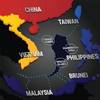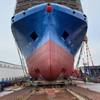Japanese Offshore Wind to Hit 4GW in 2028
Japan's nascent offshore wind industry is expected to increase dramatically over the next ten years, according to energy analysts Wood Mackenzie, who predict that by 2028 the island country will boast upwards of 4 gigawatts (GW) of offshore capacity, a 62-fold increase on 2018 figures.
As nuclear power falls out of favour in the aftermath of 2011’s Fukushima Dai’ichi nuclear disaster, Japan has struggled to bring its nuclear reactors back on the grid. Only nine reactors have successfully come online, bringing operational capacity to 9 GW last year.
Wood Mackenzie estimates that Japan will face a power generation shortfall of more than 10 GW by 2030, as it struggles to restart 30 nuclear reactors to meet the national nuclear target of 20-22% of the national power mix.
"In light of the power shortfall, Japan will need to increase its coal imports, supported by renewable energy capacity," said senior analyst Robert Liew, "In terms of renewable energy, scale matters and offshore wind is at an advantage."
The average capacity of a large solar PV plant is around 40 megawatts (MW) compared to about 300 MW for an offshore wind plant. Given Japan's experience and preference for grid management in managing nuclear plants, utility companies would prefer managing larger scale power plants.
Recognizing offshore wind's potential, Japan's largest utility Tokyo Electric Power (TEPCO) made several announcements last month regarding its ambition in offshore wind power.
Liew said: "Rising costs and a lack of public confidence in TEPCO's ability as a nuclear operator has led the company to reconsider its future strategy. TEPCO's involvement in offshore wind is a crucial development which signalled to the market that offshore wind is commercially viable. This will make it easier for the government and local companies to accept offshore wind.”
On the policy front, the Japanese Cabinet recently approved an offshore promotion law which grants developers the right to occupy an area up to 30 years (including construction and decommissioning) in general sea areas. A working group has also been set up to establish maintenance and management standards for offshore wind projects. Discussions are also under way to streamline application process for port and harbour projects in the lead up to the first offshore tenders expected by H1 2019 for potential sites in Aomori and Nagasaki prefectures.
However, with Hitachi announcing plans to stop new turbine sales, the question remains as to whether a local offshore wind supply chain can be fully established by 2020. This opens up opportunities for foreign turbine suppliers, but will add to the challenge of achieving cost reductions in the sector.
Liew said: "The medium- to long-term outlook for offshore wind in Japan looks especially promising with TEPCO's involvement in offshore wind, the growing offshore pipeline and new policy measures to support wind development. We expect Japan to emerge as a key offshore wind market in Asia."










